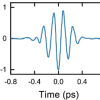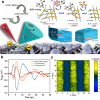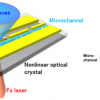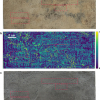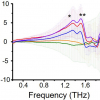
Researchers have nearly doubled the continuous output power of a terahertz (THz) quantum cascade laser (QCL). Increasing the continuous output power of these lasers is an important step toward increasing the range of practical applications. The researchers report their results in AIP Advances.
Terahertz radiation sits between microwaves and infrared light on the electromagnetic spectrum. It is relatively low-energy and can penetrate materials such as clothing, wood, plastic and ceramics. The unique qualities of THz radiation make it an attractive candidate for imaging, but the ability to produce and control THz waves has lagged behind technology for radio, microwave and visible light.
Recently, scientists have made rapid progress on the use of QCLs to produce THz radiation. Quantum cascade lasers are made from thin layers of material, which give the laser the valuable property of tunability, meaning the laser can be designed to emit at a chosen wavelength. The output power of THz QCLs is also relatively high compared to other THz sources, said Xuemin Wang, a researcher in the China Academy of Engineering Physics and first author on the new paper.
Wang and his colleagues’ work focuses on even further increasing the output power of THz QCLs, especially in the mode in which the laser output power is continuous. “In engineering, biomechanics and medical science, the applications require continuous wave mode”, Wang said.
By optimising the material growth and manufacturing process for THz QCLs, Wang and his team made a laser with a record output power of up to 230 mW in continuous wave mode. The previous record was 138 mW. Wang said the new 230 mW laser could be used in air, a challenge for lower-powered lasers since particles in the air can scatter or absorb the laser light before it reaches its target.
The increase demonstrates that the team’s method of precisely controlling the growth of the laser’s layers can increase output power, Wang said, and he is hopeful that future improvements could bring the continuous power above 1 W. The 1 W level has been reached in THz QCLs in pulsed wave mode.
Wang said he thinks scientists and engineers could use the new laser as a flexible source of THz radiation for spectroscopy, medical imaging, remote sensing and other applications.




